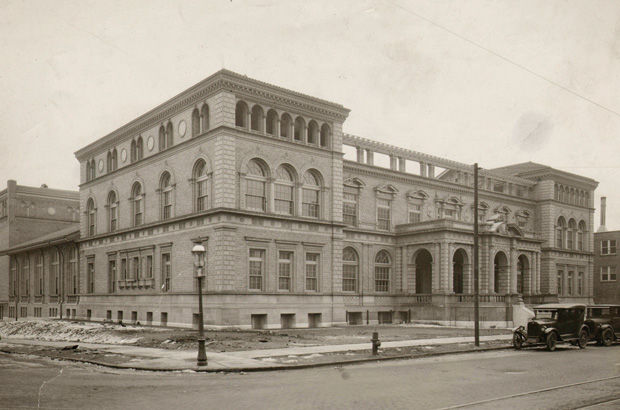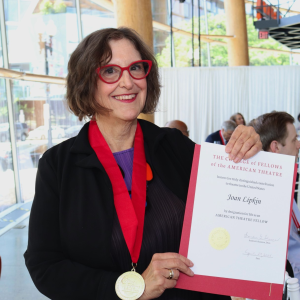Monumental contributions
Published April 29, 2015
The St. Louis Jewish Archives has been presented with a vast collection of materials including architectural drawings from the remarkable career of William M. Levy (1866-1962), a pioneer Jewish architect responsible for the design of numerous sites of Jewish significance throughout the metropolitan area.
Diane Everman, director of the archives housed at the Saul Brodsky Jewish Community Library, is excited about the collection, which covers almost 200 building and structures, as well as additions and alterations, dating from 1897 to 1951.
A description of the collection was detailed in a cover story Everman wrote for the Landmarks Letter of the Landmarks Association of St. Louis. A series of events to showcase the collection, sponsored by the Brodsky Library, the Landmarks Association and the New Mount Sinai Cemetery Association, will be announced at a later date.
Levy was born in New Orleans in 1866, the son of Martin and Fannie (Mayer) Levy. He spent most of his life in St. Louis and began to study architecture when he was 21. He worked for Grable & Weber Co. as a draftsman before opening his own practice in 1892.
“It should not be terribly surprising that Will Levy had strong ties to the local Jewish community, but the breadth of his commissions was unexpected,” Everman says.
Levy “completed designs for both the living and the dead,” she said, “including a number of mausoleums in the New Mount Sinai Cemetery at 8430 Gravois Road,” which is listed in the National Historic Registry.
Levy’s funerary designs include those done for such early St. Louis luminaries as Julius Lesser (1904), Emanuel Meyer (1921), Moses Shoenberg (1924), Leon Harrison (1929), Julia Singer Bry (1929) and Samuel B. Butler (1939). He also designed the cemetery’s original chapel and receiving vaults in 1905, its greenhouse in 1936, a service building and a keeper’s cottage.
The mausoleums and other structures at the New Mount Sinai Cemetery are admired for their graceful designs, and they are popular features of frequent historic tours of the cemetery that are conducted throughout the year.
Levy was also prolific in his designs of numerous Jewish institutions. In 1899, he designed the Home for Aged and Infirm Israelites at Jefferson Avenue and Winnebago Street, one of two predecessor Jewish facilities for aged, the other being the Jewish Orthodox Old Folks Home. The two facilities merged into the Jewish Center for Aged in 1941.
Levy also designed the Jewish Hospital’s first building on Delmar Boulevard in 1905, and completed plans in 1914 for the Jewish Sanitarium on Fee Fee Road, and design revisions in 1928 as well as the Convalescent Home for Miriam Lodge in Webster Groves in 1917 and the old Jewish Orphan’s Home on Oakland Avenue in 1927.
It is almost mind-boggling that so many of the iconic buildings that housed Jewish agencies and programs during the late 19th and early 20th centuries were designed by one architect.
In addition to the above, Levy also designed structures for the Westwood Country Club beginning in 1928, as well as the old Young Men’s/Women’s Hebrew Association at Union Boulevard and Enright Avenue in 1926. He also produced drawings for the United Hebrew Congregation when it was located on Delmar in 1922-1923, and an addition to the former Shaare Zedek (now Kol Rinah) building at 4270 Page Boulevard. He also designed the Mahler Ballroom at 4911 Washington Boulevard for his brother-in-law Jacob Mahler in 1907.
Within the general community, Levy was engaged by the Conroy Piano Co. in 1904 to improve its newly leased building at the southwestern corner of 11th and Olive streets, where he installed piano parlors on the first and second floors. The Anita Land Co., owned by Moses Shoenberg, hired Levy to design a five-story steel-frame building to house the Erker Bros. Optical Co.
Levy’s work with a local automobile dealership led to his involvement with the St. Louis Cardinals in 1920. By 1925, he was designing baseball parks for the St. Louis Browns, the Cardinals and its farm teams. He drew up impressive plans during World War II for a never-built Cardinal Field at Grand and Chouteau avenues and for an addition to Sportsman’s Park’s offices, floodlight towers, box seats, signs, scoreboard and concession stand.
“Each one of the plans, elevations and detail drawings within the Will Levy Collection is a gem unto itself,” Everman says. “Together, they paint a fascinating picture of architectural design in St. Louis from the late 19th through the middle of the 20th century.”
Levy died at Jewish Hospital in St. Louis on March 26, 1962, at the age of 96. He had been residing on Blendon Place in Maplewood.















